Fungal Pigments and Their Prospects in Different Industries
- PMID: 31766735
- PMCID: PMC6955906
- DOI: 10.3390/microorganisms7120604
Fungal Pigments and Their Prospects in Different Industries
Abstract
The public's demand for natural, eco-friendly, and safe pigments is significantly increasing in the current era. Natural pigments, especially fungal pigments, are receiving more attention and seem to be in high demand worldwide. The immense advantages of fungal pigments over other natural or synthetic pigments have opened new avenues in the market for a wide range of applications in different industries. In addition to coloring properties, other beneficial attributes of fungal pigments, such as antimicrobial, anticancer, antioxidant, and cytotoxic activity, have expanded their use in different sectors. This review deals with the study of fungal pigments and their applications and sheds light on future prospects and challenges in the field of fungal pigments. Furthermore, the possible application of fungal pigments in the textile industry is also addressed.
Keywords: color; dyeing; fungal pigments; natural pigments; textile fabrics.
Conflict of interest statement
The authors declare no conflict of interest.
Figures
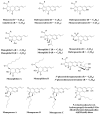
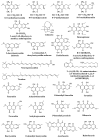
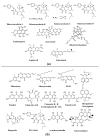

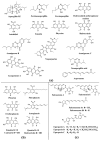
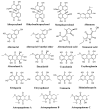

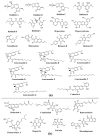
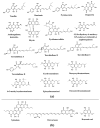

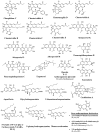
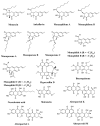
Similar articles
-
Fungal Pigments: Potential Coloring Compounds for Wide Ranging Applications in Textile Dyeing.J Fungi (Basel). 2020 May 20;6(2):68. doi: 10.3390/jof6020068. J Fungi (Basel). 2020. PMID: 32443916 Free PMC article. Review.
-
An Overview on Industrial and Medical Applications of Bio-Pigments Synthesized by Marine Bacteria.Microorganisms. 2020 Dec 22;9(1):11. doi: 10.3390/microorganisms9010011. Microorganisms. 2020. PMID: 33375136 Free PMC article. Review.
-
Fungal and Bacterial Pigments: Secondary Metabolites with Wide Applications.Front Microbiol. 2017 Jun 22;8:1113. doi: 10.3389/fmicb.2017.01113. eCollection 2017. Front Microbiol. 2017. PMID: 28690593 Free PMC article. Review.
-
Valorization of pineapple peel waste for fungal pigment production using Talaromyces albobiverticillius: Insights into antibacterial, antioxidant and textile dyeing properties.Environ Res. 2023 Jul 15;229:115973. doi: 10.1016/j.envres.2023.115973. Epub 2023 Apr 23. Environ Res. 2023. PMID: 37088318
-
Extraction and optimization of Penicillium sclerotiorum strain AK-1 pigment for fabric dyeing.J Basic Microbiol. 2021 Oct;61(10):900-909. doi: 10.1002/jobm.202100349. Epub 2021 Aug 31. J Basic Microbiol. 2021. PMID: 34467566
Cited by
-
Safety Evaluation of Fungal Pigments for Food Applications.J Fungi (Basel). 2021 Aug 26;7(9):692. doi: 10.3390/jof7090692. J Fungi (Basel). 2021. PMID: 34575730 Free PMC article. Review.
-
Isolation and Identification of Pigment-Producing Endophytic Fungi from the Amazonian Species Fridericia chica.J Fungi (Basel). 2024 Jan 19;10(1):77. doi: 10.3390/jof10010077. J Fungi (Basel). 2024. PMID: 38276023 Free PMC article.
-
Microbial Pigments: Major Groups and Industrial Applications.Microorganisms. 2023 Dec 4;11(12):2920. doi: 10.3390/microorganisms11122920. Microorganisms. 2023. PMID: 38138065 Free PMC article. Review.
-
A Prototype Method for the Detection and Recognition of Pigments in the Environment Based on Optical Property Simulation.Plants (Basel). 2023 Dec 15;12(24):4178. doi: 10.3390/plants12244178. Plants (Basel). 2023. PMID: 38140505 Free PMC article.
-
Characterization of an Endophytic Strain Talaromyces assiutensis, CPEF04 With Evaluation of Production Medium for Extracellular Red Pigments Having Antimicrobial and Anticancer Properties.Front Microbiol. 2021 Aug 4;12:665702. doi: 10.3389/fmicb.2021.665702. eCollection 2021. Front Microbiol. 2021. PMID: 34421835 Free PMC article.
References
-
- Downham A., Collins P. Coloring our foods in the last and next millennium. Int. J. Food Sci. Technol. 2000;35:5–22. doi: 10.1046/j.1365-2621.2000.00373.x. - DOI
-
- Babitha S. Microbial pigments. In: Nigam P.S., Pandey A., editors. Biotechnology for Agro-Industrial Residues Utilization. Springer; Dordrecht, The Netherlands: 2009. pp. 147–162.
-
- Samanta A.K., Agarwal P. Application of natural dyes on textiles. Indian J. Fibre Text. Res. 2009;34:384–399.
Publication types
LinkOut - more resources
Full Text Sources

